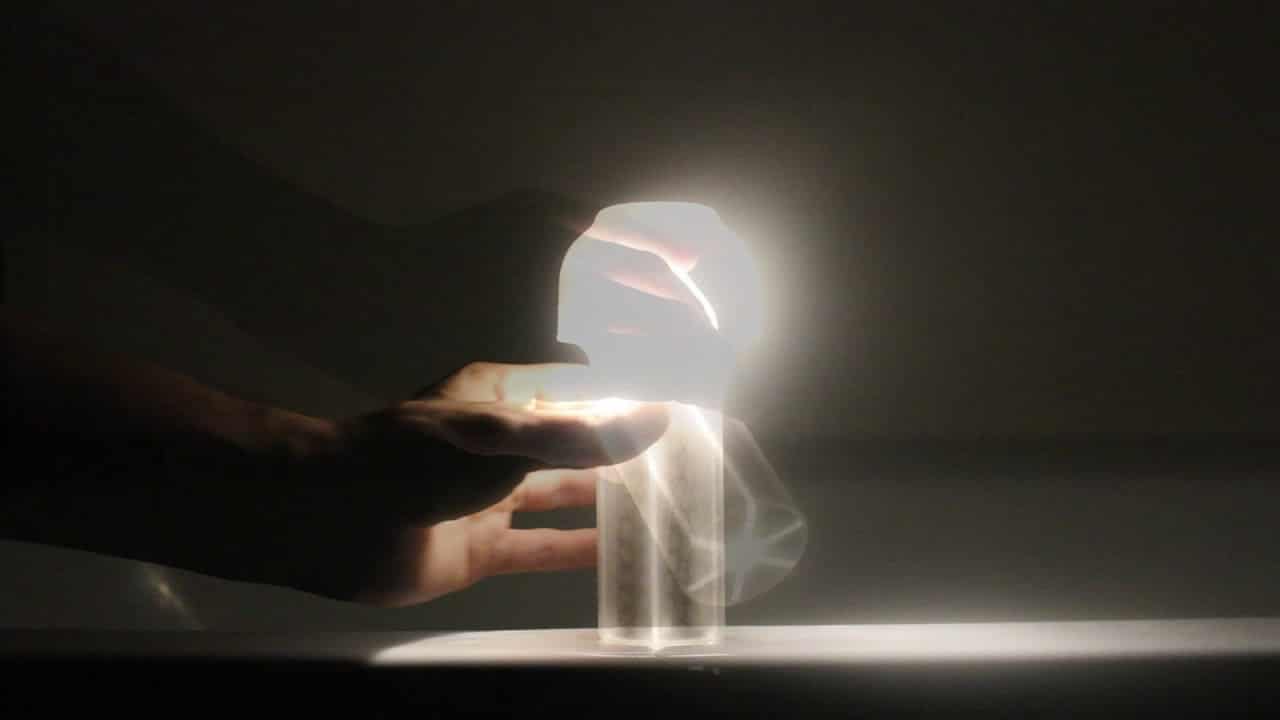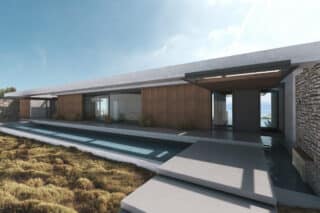With such an abundance of imagery and ideas swirling around us, we’re still eager to find the next leading young designers on the scene with that special something. Per usual, the IMM 2019 Pure Talents Contest showcased the top soon-to-graduate or fresh-out-of-school designers. Although the winners will be announced on February 1st, ArchiExpo e-Magazine sat down with contestant Bastian Thürich, currently studying product design at Berlin University of the Arts, to speak about SALT, the work lamp he’ll be exhibiting and the ideas behind his process.
Made only of copper, saltwater and magnesium, SALT reverses the idea of energy and waste, both literally and metaphorically. The copper wires are woven to create a grid-like structure, which the salt crystallizes upon then breaks apart creating reflections of light. In order to turn the light “on,” the luminaire doesn’t require a switch. It’s turned from upside-down to right-side-up, allowing the saltwater to rush to the bottom and closes the circuit to illuminate naturally.
ArchiExpo e-Magazine: How is the form related to the function of SALT?
Bastian Thürich: The result was sort of a side effect as the salt water is what turns it on and is able to flow, it was natural to use those abilities; so I thought I can turn it and flow it to another chamber so it starts the process.
But, it’s changed now. When I was exhibiting at the Dutch Design Week in Eindhoven earlier this year, I noticed that turning an object around means something totally different because it’s upside down. For example, if we think about a chair, we know what a chair is but if we see a room full of chairs upside down, it’s kind of strange. There’s something to it if you have to move things before they perform the purpose they are supposed to fulfill.
Of course with a normal light, you have to turn a switch on and you have to interact with an object before it does what it’s supposed to do. It’s normal for us to think ok, I have to click this little button, we’re used to that, but we’re not actually used to turning things to make them start.

“It’s turned from upside-down to right-side-up, allowing the saltwater to rush to the bottom and closes the circuit to illuminate naturally.” Bastian Thürich’s SALT Lamp
ArchiExpo e-Magazine: Where do you source your materials?
Bastian Thürich: That’s the nice thing about this project, they’re all materials that you can actually get everywhere. That was the main focus because when you look into normal batteries, you have lead or cadmium, which are hazardous and you can’t buy them anywhere. So the materials I used -copper; can be bought at a hardware store, salt; on eBay and magnesium too because I didn’t use the form that we usually buy. Actually, magnesium, which creates energy, is one of the top 10 materials on Earth in terms of how often it appears. Magnesium is everywhere.
ArchiExpo e-Magazine: Was the accessibility of materials intentional?
Bastian Thürich: The main point for me is that there are 1.5 billion batteries sold in Germany every year, but you can’t just throw them in the garbage because of the materials I spoke about like lead, quicksilver, etc. You have to put them the recycling container you can only find at supermarkets. Only 15% actually get to that bin and after that, there’s a recycling system for separating all the materials and it’s very energy-consuming. But, with the technology that I’m using you are only left with saltwater that you can just put in the greywater system or even the toilet, the magnesium vanishes, and the copper is reusable.
ArchiExpo e-Magazine: Do you hope to relay a message?
Bastian Thürich: I don’t think of this as a mass product, but I do think that as designers we can help others visualize how things could be- you can get people to think about what it actually means to use batteries. I don’t think we should get rid of all of them because our mobile lifestyle depends on it, but I think it’s good to know that this freedom that mobility brings comes with a price. We have to look at what everything we do in our lives means.
I’m not trying to point my finger at others, saying “uh, uh, uh,” But, I think it’s nice to have people look at the object and think about how it works.











